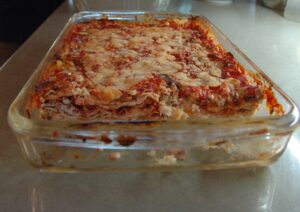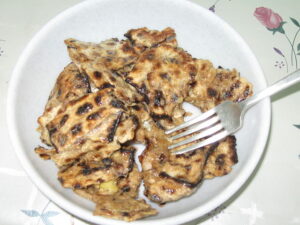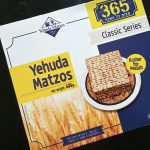On Passover, many people highlight the food customs that divide Jews into different groups. One of the “worst offenders” in this context is kitniyot; Ashkenazi Jews have the custom not to eat foods such as rice, corn, sesame, and beans, while many non-Ashkenazim have no issue consuming such foods on the holiday. Still, as I wrote previously, it isn’t like kitniyot is the only thing that non-Ashkenazim eat on Passover. So there are still many foods that are commonly eaten by both Sephardim and Ashkenazim, for example.
Another custom is that some, particularly Chasidic, Jews do not eat gebrochts — matzoh that has been made wet. I am not here to discuss the merits or flaws in these customs, nor to debate whether beans are in some way similar to wheat, or whether everyone should enjoy a good matzah ball. Rather, what I’d like to show here is how so many Passover foods cross the Jewish cultural divides, rather than separating us into smaller tribes within the Nation of Israel.
The Meaning of a Mina
One of the most popular foods eaten on Pesach (the Hebrew name for Passover) throughout the Sephardi Diaspora is known as Mina. It goes by numerous other variations on the name, such as Mina de Matzah, Meguina, Mayina, Minina, etc. Pictured above, it is a pie of matzah, typically softened first, often coated with some egg, and layered with various fillings. The fillings might be ground meat and vegetables, cheese and spinach, or any of many other combinations. But beyond the filler variations, they are clearly all versions of the same main dish.

Now some of you might say, “Sure, they are similar, but is matzah lasagna really a traditional food?” And I’d say, first of all, that it is for Italian Jews! But beyond that, I’d argue that even if they aren’t long-standing traditions, many modern Ashkenazi Jews make them today, so they are widely eaten, whether “traditional” or not! I’d argue that the mina-matzah lasagna connection is one example of a Passover food that unites Jews of different backgrounds.
But even if you don’t agree when looking at this pair alone, you might be more inclined to concede when you see how many other similar examples we find.
More Commonalities
You know what is a traditional Ashkenazi Passover food? Chremslach. I’m not sure how many of you know them, but chremslach (also called bubeleh) are matzah meal or matzah-and-potato fritters. Think of them as the Pesach equivalent of a latke. Well, guess what many Sephardic Jews eat during Passover? Matzah fritters commonly known as bimuelos or burmuelos. You’d be hard-pressed to tell the difference between the two dishes at just a glance.

But many other communities have similar, parallel foods. Greek Jews have masa tiganita — squares of egg-coated matzah fried in a pan. They may be slightly more formal in their look, but the dish is essentially the same. From Turkey we can find revanadas — egg-coated fried matzah. And some versions of Yemenite fatut are almost indistinguishable from a savory matzah brei.
Syrian Jews make a special version of kibbeh or kubbeh, in which the meat filled dumpling uses rice flour on the outside instead of bulgar. Many Ashkenazim stuff their matzah balls, though usually with friend onions, rather than meat. Still, halke is another Ashkenazi Passover food, a potato dumpling that is commonly filled with ground meat. Not drastically different, is it?
And perhaps a bit more tenuous, but compare Greek matzah baklava with modern American chocolate-covered or caramelized matzah. That may be pushing things a bit, but I think the point is made.
The How and Why of it All
I am not suggesting that there was any direct transmission of these ideas, in most cases, between the different communities of Jews. More likely than not, these are examples of parallel development. There isn’t that much you can do with matzah, and everyone is looking for interesting and tasty things to eat within the strict confines of what is permitted for consumption on the holiday. So Jews in different areas presumably came up with similar ideas and solutions.
These foods may not be identical, but they are too alike to ignore the similarities. On a holiday that celebrates the birth of our nation, a holiday that is easily the most celebrated around the world, how nice is it to find such parallel development that ties us together as a single people. As with the many Shabbat stews we encounter around the world, and as with the many different versions of charoset one can find, these dishes reveal the unity within the diversity of the Jewish nation.
Share With Jewish Foodies From Every Community!






